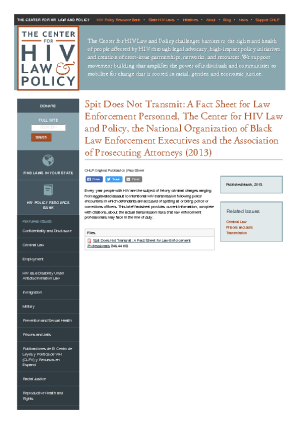Spit Does Not Transmit: A Fact Sheet for Law Enforcement Personnel, The Center for HIV Law and Policy, the National Organization of Black Law Enforcement Executives and the Association of Prosecuting Attorneys (2013)
This 2013 factsheet produced by the Center for HIV Law and Policy, the National Organization of Black Law Enforcement Executives and the Association of Prosecuting Attorneys provides current factual information about the HIV transmission risks law enforcement professionals may face in the line of duty (aiming to address the frequent overstating of risk). States there is no known case of a law enforcement officer being infected in the line of duty through spitting or biting.
